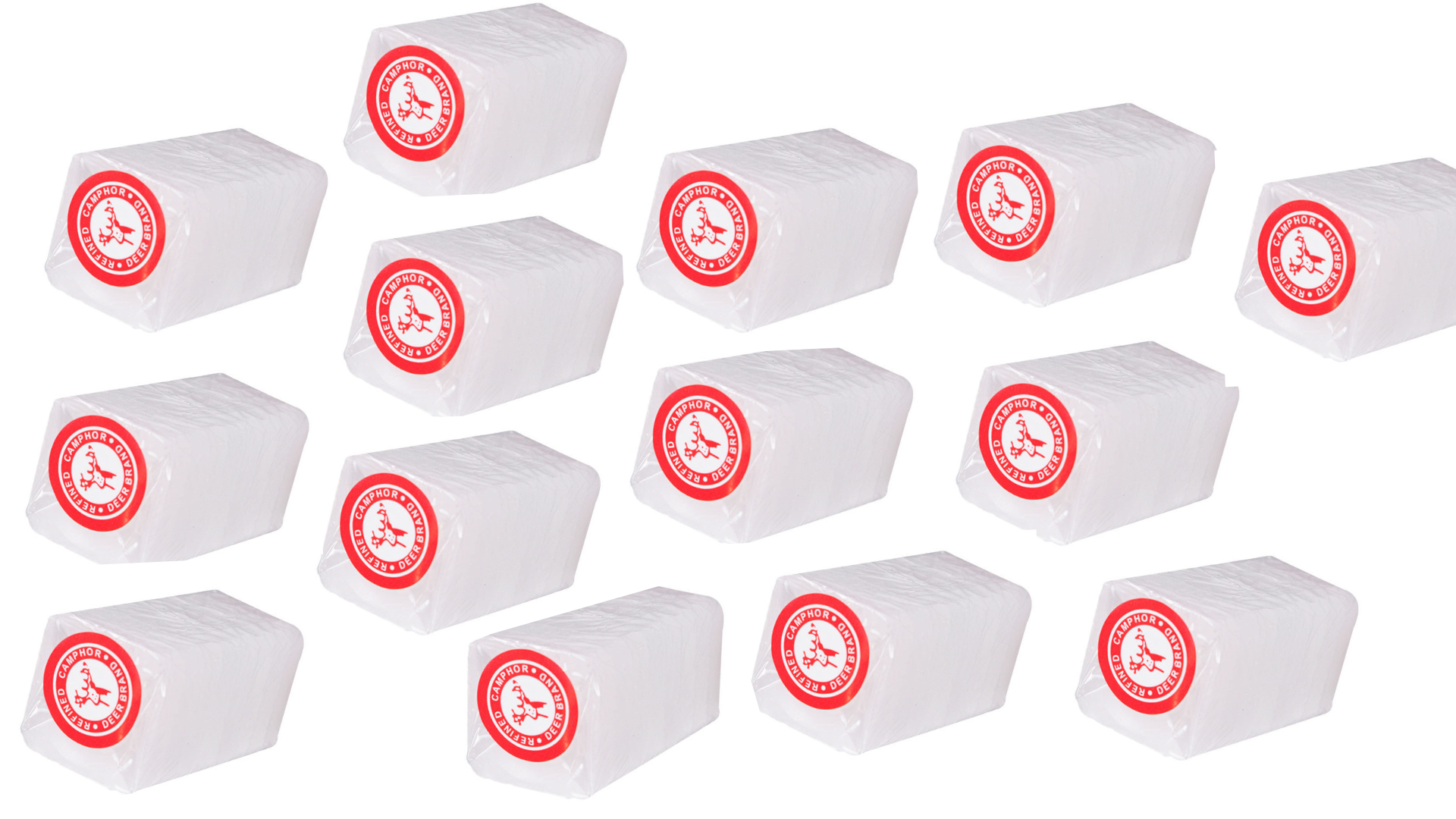Family: Lauraceae
Scientific name: Cinnamomum Camphora
Authority: (L.) Nees & Eberm.
Trade name: Camphor block
What is a camphor block?
Camphor block is a waxy, flammable, and translucent white cube with a strong piquant aroma. It is made from camphor, an aromatic white crystalline compound with a bitter taste found in the camphor laurel tree, scientifically known as Cinnamomum camphora. C. camphora is a large evergreen tree native to East Asia.
How is a camphor block made?
In the past, camphor was obtained from the stem of the 50-year-old camphora laurel tree, since only 50-year-old trees produce the waxy substance needed to make a camphor block. The steam distillation process is used to extract the camphor oil from the tree’s stem.
Nowadays camphor is predominately produced artificially from turpentine oil, a substance made from the resin of certain pine trees.
Medicinal properties
C. camphora reportedly has anti-inflammatory, antibacterial, antiseptic, analgesic, antisplasmodial, antimicrobial, and antioxidant activities. It also has insecticidal, antifungal and antimicrobial potential.
Uses
Camphor is a natural product used in traditional medicine to treat asthma, bronchitis, colds, chest pain and congestion, inflammation, ingestion, muscle pain, rheumatism, and sprains. Camphor block can be used for the same medicinal uses. It can also be used for the following:
- Spiritual cleansing and protection – in India, camphor is burnt as an offering to Hindu gods. Burning the camphor block in the home cleanses it from evil and negative energy.
- Makes perfumes – the Arab region and China use camphor block as an ingredient when making perfume. In Saudi Arabia the camphor block is used as an aromatic substance that is added to dead bodies.
- Relieves pain, swelling, & itching – camphor block is added to a cream or balm and applied on the skin to dull bodily pain, swelling, itching, and eczema. The balm and cream are also used to relieve inflammation.
- Relieves nasal congestion, cold, and cough – camphor block is added to Vicks VapoRub.
- Treats nail fungus – camphor block aids in fighting against fungi that can cause infection in toenails.
- Helps induce sleep – the calming effect of the camphor block helps induce sleep.
- Promotes hair growth – combine camphor block with essential oils, such as coconut oil or olive oil, to boost hair growth.
- Makes embalming fluid – the strong scent of the camphor block is an ingredient in embalming fluid.
- Makes insect repellents – camphor block is a natural insecticide that repels ants, cockroaches, mosquitoes, moths, and bed bugs.
- Treats isichitho – the camphor block is used to treat isichitho, a concocted curse.
- Treats isiwasho – the camphor block is used to make different types of iziwasho (cleansers) for cleansing the home and bathing.
Preparation
- Isichitho
- To treat sorcery inflicted lice, known as isichitho sezintwala in Zulu – mix the leaves of intuma enkulu (Solanum aculeastrum), ubhici (Lantana camara), ucadolo (Bidens pilosa), Nicotiana tabacum and camphor block.
- Isiwasho
- To cleanse the home and ward off evil – mix camphor block, methylated spirit, shibhoshi, and coarse salt to make isiwasho (a cleanser) for sprinkling in and around the home, known as ukuchela in Zulu.
- Cleanse the home
- Grate the camphor block and burn it on top of charcoal to cleanse your home.
- Repel insects
- Put a piece of camphor block in a small bowl, add water in the bowl and place in the room, ensuring that you keep it out of reach of children.
- Keep clothes fresh
- Place a piece of camphor block in the wardrobe to remove bad smells from clothes.
Buy camphor block and camphorated oil: https://imithiyesintu.co.za/shop/camphorated-oil-50ml/ and https://imithiyesintu.co.za/shop/camphor-block-7g/
You can learn more about the uses of camphor block and how it is used to make isiwasho, by accessing isiwasho. You can learn about coarse salt, shibhoshi, and holy ash by accessing coarse salt, shibhoshi, and holy ash. | You can also learn about isichitho, by accessing isichitho.
Safety precaution
Do not eat camphor block because that is unsafe. Additionally, avoid using camphor block on broken skin.
The use of traditional medicine in prescribed dosages will yield good results. Misuse and abuse may lead to complications. To learn about correct dosage, consult a traditional healer or a herbalist. You can also visit imithiyesintu.co.za or email: info@imithiyesintu.co.za to learn more about traditional medicine.
